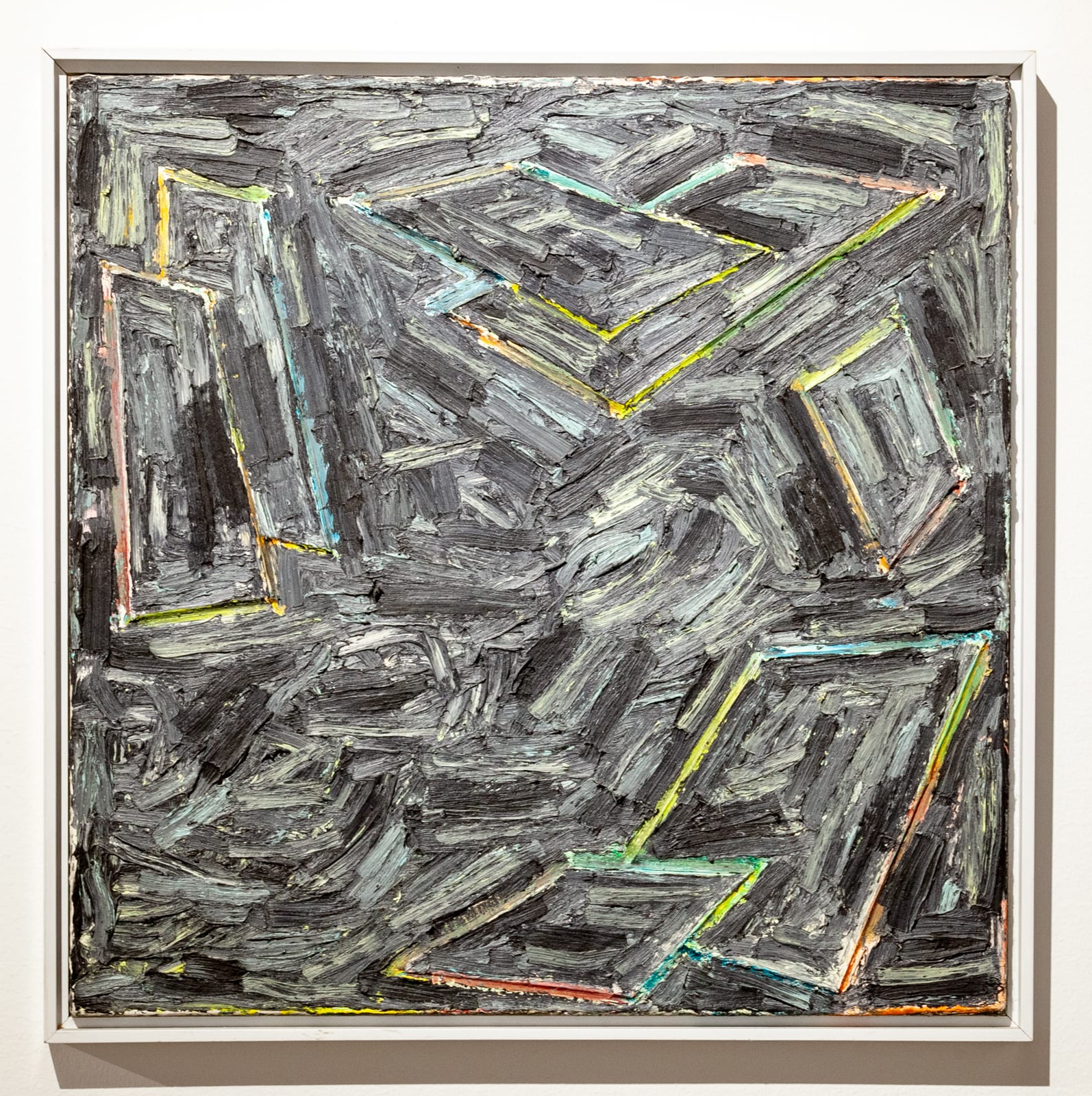Jack Whitten USA, 1939-2018
Soulspace X (Black Jasmine), 1984
Oil and acrylic on canvas
20 x 20 in
50.8 x 50.8 cm
50.8 x 50.8 cm
5260
Further images
This painting by Jack Whitten (1939-2018) was painted one year after his 10-year retrospective at the Studio Museum in Harlem. The work is part of a series of square “Soulspace”...
This painting by Jack Whitten (1939-2018) was painted one year after his 10-year retrospective at the Studio Museum in Harlem. The work is part of a series of square “Soulspace” paintings that the artist debuted in 1984. With its rough-textured surface and intentional, heavy mark making, the work offers a glimpse into the artist’s lifelong examination of the mediums and techniques of painting, and the relationship that exists between the inspiration for a work and the materials and processes used to realize it.
The title Soulspace is suggestive of Whitten’s belief that meaning and information were embedded in the materials and abstract visual strategies he used to create his works. Whitten was influenced greatly by his experiences as an activist during the Civil Rights Movement. Though he considered his works to be fundamentally abstract, he strived to convey a certain essence in each of the pieces he made. For example, his renowned Black Monolith series features paintings made in homage of heroes of Black culture. The title of this work also includes the phrase Black Jasmine. In addition to his New York studio, Whitten spent long stretches of time living and working in Crete, where Jasmine and Olive trees are common.
Whitten believed strongly that one of the most profound and destructive legacies of the enslavement of Black people was the interruption, and outright destruction, of African diasporic culture. He considered it his responsibility to devote his life and art towards the restoration of that culture.
Note: Piece was hand selected by four, MoMa, NY curators to be a focus point of the artist’s first career retrospective in 2025
The title Soulspace is suggestive of Whitten’s belief that meaning and information were embedded in the materials and abstract visual strategies he used to create his works. Whitten was influenced greatly by his experiences as an activist during the Civil Rights Movement. Though he considered his works to be fundamentally abstract, he strived to convey a certain essence in each of the pieces he made. For example, his renowned Black Monolith series features paintings made in homage of heroes of Black culture. The title of this work also includes the phrase Black Jasmine. In addition to his New York studio, Whitten spent long stretches of time living and working in Crete, where Jasmine and Olive trees are common.
Whitten believed strongly that one of the most profound and destructive legacies of the enslavement of Black people was the interruption, and outright destruction, of African diasporic culture. He considered it his responsibility to devote his life and art towards the restoration of that culture.
Note: Piece was hand selected by four, MoMa, NY curators to be a focus point of the artist’s first career retrospective in 2025
Provenance
Artist Studio NYCollection Henry Geldzahler (Famed 1966-78 Curator, Metropolitan Museum of Art in New York) 1984, NY
Dealer NY 1978
Private collection Chicago
Kavi Gupta Collection, Chicago 2005

